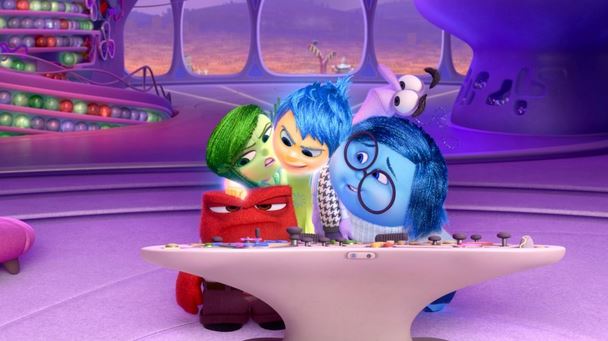Inside Out Offers Important Lessons for Grieving Children and Adults
Article originally appeared on What’s your grief?
If you’re wondering whether Pixar’s newest movie Inside Out will make you cry, the answer is maybe. I know because I saw it a few days ago, thanks to Discount Tuesdays at the local movie theater and two very bored children (we’re on week two of summer vacation people, things are not looking good).
I’m not a particularly weepy person save for the occasional down day, random reminders of my deceased mother in the grocery store, when I get all the way home before realizing I picked up the wrong carry out order, and when watching an especially rousing musical number. So you see, I only cry for the best most important reasons.
Being the tough girl that I am, I didn’t think Inside Out would make me cry. I managed to hold strong for about 95% of the film, but there was this one part….well…I won’t spoil it for you, but it made me very sad. My 5-year-old noticed the tears running down my face and immediately notified her 8-year-old sister. Obviously, they were both horrified. For the remainder of the movie every time something even remotely sad happened my kids would sneak looks at me, making sure I had myself under control. So yes, you too may cry in front of your children and that’s okay.
I typically don’t like writing about movies, but I feel the message of Inside Out is so spot on for anyone who’s experienced a loss or gone through a tough transition that I almost feel like covering this movie is in my job description. Before our adult readers dismiss what I have to say, I want you to know this movie falls among a handful of movies that transcend what you typically expect from animated movies.
On the surface these movies are made for children with their beautiful animation and funny characters, but on a deeper level they really effectively tackle themes and issues around growing up (Inside Out, Toy Story), death, loss, and grief (Up, Big Hero 6), and even existential themes (that’s you again, Toy Story). In doing this, they often allow grown-ups to see these concepts from a younger more innocent perspective in ways that are thought-provoking, disarming, and profound.
I’m horrible at summaries and synopses (that’s the plural of ‘synopsis’, I looked it up), but I want to convey to you why this movie is great for children who’ve experienced losses of any kind. I’ll try not to include many spoilers but proceed with caution if you want to see the movie with completely fresh eyes.
There are different emotions and they have names
Even adults can struggle to name their emotions from time to time. In my experience, children are seldom cognizant of the ebb and flow of their feelings or the idea that they have many different emotions rattling around in their cute little brains. Inside Out is essentially told from the perspective of the main character 11-year-old Riley’s emotions who are personified as the characters Joy, Fear, Sadness, Anger, and Disgust.
Of course humans experience a broader range of emotions than just these five, anyone who’s been through grief can attest to that. The director and his team had to identify a few key emotional players so they called in an expert psychologist, Paul Ekman, who helped them hone in on their main characters. These characters represent 5 of the 7 emotions which Ekman says have universal facial signs (the two they excluded were surprise and contempt).
—Read the rest of the article—




